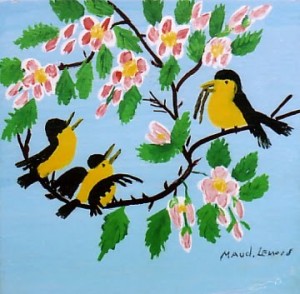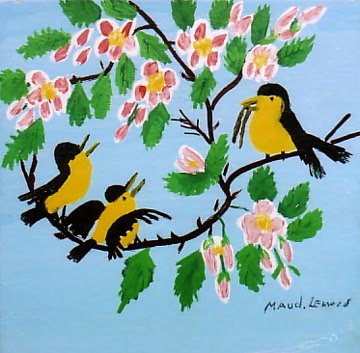 Occasionally I will have a Maud Lewis painting displayed for sale in my shop, and it is sometimes interesting to get people’s reactions to a $6,000 painting that at first glance looks like their 12 year old niece painted it. “My goodness will you look at that,” and some covered up snickering, pretty well expresses their complete disbelief that something so simple could possibly be worth so much money.
Occasionally I will have a Maud Lewis painting displayed for sale in my shop, and it is sometimes interesting to get people’s reactions to a $6,000 painting that at first glance looks like their 12 year old niece painted it. “My goodness will you look at that,” and some covered up snickering, pretty well expresses their complete disbelief that something so simple could possibly be worth so much money.
Sometimes I give a brief description of the circumstances of her simple Nova Scotia life, and add fuel to the fire by informing them that while she was alive she sold paintings for 12 to 15 dollars from her tiny house by the side of the road. I then suggest it is probably simplest to think in terms of supply and demand. The supply of these paintings has stopped since her death in 1970, and there are many more people wanting them than there are paintings available. This of course skirts the main issue: how could anything like this be desirable in the first place? To find the answer you have to go a lot deeper.
Beauty is in the eye of the beholder, and for some people—I include myself in this group—great value is placed on anything that manages to capture, or in some way manifest, beauty. I do not mean “pretty picture” beauty here. I mean creations that celebrate existence, or connect to a greater truth. I mean something that has energy.
This energy can be found in the works of trained and untrained artists alike. The real value in truly great works of art is in experiencing them, and in doing so being educated and transformed by them. Understanding beauty is our salvation. Money really just confuses the issue. Put in relative terms: $4 million for a Tom Thompson and $6,000 for a Maud Lewis—the Lewis is still cheap. For the Silo, Phil Ross.
